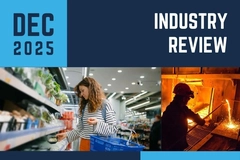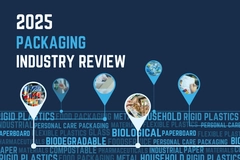Canada launches Pollution Prevention Planning Notice for primary food plastic packaging

11 Aug 2023 --- The Canadian government is inviting grocery retailers, stakeholders and interested Canadians to provide input on the proposed Pollution Prevention Planning Notice (P2 Notice) to be published later this year regulating primary food plastic packaging.
The P2 Notice would require Canada’s largest grocery retailers to prepare and implement a pollution prevention plan to meet targets to reduce, reuse and redesign primary food plastic packaging, including recycled content. It outlines how an organization can minimize pollution at source.
The Canadian Regulatory Framework Paper for Recycled Content and Labelling Rules for Plastics, released this spring, exempts primary food plastic packaging from recycled content requirements due to food safety requirements. Building on the framework with the P2 Notice, the government intends to reduce plastic pollution through a comprehensive approach that addresses the entire lifecycle of plastics.
“Together, the P2 Notice and the proposed Recycled Content and Labelling for Plastic Products Regulations, which are targeted for publication before the end of 2023, would reduce the overall threat of harm posed by plastic items in the environment,” the government states.
It reasons that plastic food packaging – such as juice bottles, produce bags, yogurt containers and meat trays – makes up approximately one-third of all plastic packaging in Canada, “with a significant amount of that intended for single-use.”
 According to Canadian government, food packaging makes up approximately one-third of all plastic packaging in the country.Consultation details
According to Canadian government, food packaging makes up approximately one-third of all plastic packaging in the country.Consultation details
The consultation paper released by Ottawa outlines that it is looking for inputs on factors to consider while addressing primary food plastic packaging waste, supply chain considerations and other barriers, metrics to report and measure success, and data and insights from food retailers on plastic footprint.
The notice is not intended for small businesses, independent grocers and farmers’ markets but would require large retailers to eliminate “problematic packaging” and displace single-use with reuse-refill systems.
“Plastics play an important role in the everyday lives of Canadians. However, a significant amount of plastic food packaging is used only once and then ends up in landfills as waste or in the environment as pollution,” says Canadian Minister of Environment and Climate Change, Steven Guilbeault.
“The solution lies in the concerted action and combined efforts of all governments, industry (in this case, major grocery retailers), and Canadians. By getting rid of problematic plastic food packaging, replacing single-use packaging with reuse-refill systems and ensuring that plastics, if needed, are designed to be safely reused, recycled or composted, we can all help move Canada toward zero plastic waste.”
Efforts to tackle plastic pollution
At the beginning of the year, Ottawa imposed strict deadline restrictions for industries to phase out and eradicate single-use plastic products nationwide.
According to government data, in 2019, Canadians threw away 4.4 million metric tons of plastic waste, only 9% of which was recycled. “Over the next decade, it is estimated that the Single-use Plastics Prohibition Regulations will eliminate over 1.3 million metric tons of hard-to-recycle plastic waste and more than 22,000 metric tons of plastic pollution, which is equivalent to over a million garbage bags full of litter,” the government details.
Moreover, it informs that a recent audit of large grocery stores across Canada found that nearly two-thirds (64%) of products in select grocery sections (produce, baby food, pet food and soup) were packaged in plastic intended for single use.
A study carried out by researchers at the University of Toronto, Indiana University, US, and University of Notre Dame, US, revealed that food packaging exposes people directly to PFAS “forever chemicals,” which have been linked to serious health effects such as increased cancer risk and immune system damage, by contaminating the food they eat.
By Radhika Sikaria










